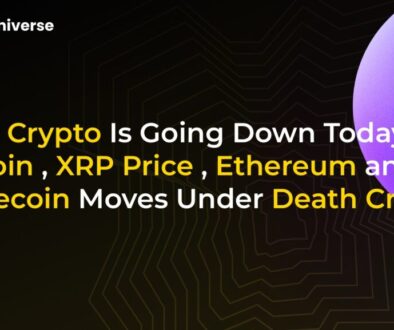Why Web3 Opportunities Remain Out of Reach for Most — and How That’s Finally About to Change

The Promise and the Problem of Web3
Web3 has been hailed as the next great evolution of the internet — a decentralized digital world owned by its users, not by giant corporations. It promises a future of greater control, transparency, and innovation. Yet, for all its revolutionary potential, Web3 today feels more like an exclusive club than an open frontier. The dream of a decentralized internet remains locked behind formidable technical walls, leaving millions of creators, entrepreneurs, and visionaries on the sidelines.
The core issue is accessibility. The specialized tools and deep technical knowledge required to build on the blockchain are in the hands of a select few. This isn’t just a small hurdle; it’s a massive barrier that stifles widespread adoption and innovation. We’ll explore why
The Great Wall of Web3: Why Is It So Hard to Get In?
Every major technological shift, from the personal computer to the mobile internet, only achieved mass adoption when it became simple enough for everyday people to use and create with. Web3 has not yet had its breakthrough moment, and the numbers tell a stark story.
Out of an estimated 47 million software developers worldwide, only about 24,000 are actively building on the blockchain each month. That’s less than 0.1% of the global developer pool. This isn’t due to a lack of interest, but a testament to the steep learning curve. The main obstacles include:
- The Coding Mountain: Building decentralized applications (dApps) requires proficiency in complex programming languages like Solidity or Rust. Writing secure and efficient smart contracts is a highly specialized skill far beyond the reach of the average developer, let alone a non-technical founder.
- The Security Minefield: Blockchain is immutable, meaning mistakes can be permanent and costly. A single vulnerability in a smart contract can lead to devastating financial losses, requiring rigorous and expensive security audits from specialist firms.
- The Fragmentation Maze: The Web3 ecosystem is a patchwork of different blockchains, protocols, and tools that don’t always work well together. Navigating this fragmented landscape is a daunting task that can overwhelm even seasoned builders.
- The User Experience Chasm: For end-users, interacting with Web3 often involves managing complex crypto wallets, private keys, and confusing transaction fees (gas). This friction-filled experience is a major deterrent for mainstream audiences.
A Lesson from History: The “WordPress Moment” is Coming
If this all sounds familiar, it should. Every transformative technology starts as a complex tool for experts before it becomes a simple platform for everyone.
- The personal computer didn’t change the world until spreadsheets and word processors made it a practical tool for business owners and writers, not just programmers.
- The internet exploded in popularity once web browsers and blogging platforms like WordPress lowered the barrier to entry, allowing anyone to publish content without being a web developer.
- E-commerce was democratized by platforms like Shopify, which enabled any merchant to set up a global online store without writing a single line of code.
These were the “WordPress moments” and “Shopify moments” that turned niche technologies into global phenomena. Web3 is on the cusp of its own such moment, driven by the convergence of two powerful forces: no-code development and artificial intelligence.
The Dawn of the Citizen Creator in Web3
The breakthrough for Web3 won’t come from a more complex programming language; it will come from eliminating the need to code altogether. A new generation of platforms is emerging that uses AI and no-code interfaces to translate human ideas directly into blockchain-based applications.
Imagine describing your project in plain English: “Create a community token for my online art group that rewards members for participation,” or “Launch an NFT ticketing system for my next event.” The platform, powered by an AI that acts as a virtual co-founder, would then assemble the necessary smart contracts from a library of pre-audited, secure components.
This isn’t science fiction. The no-code revolution is already well underway. By 2025, it’s projected that 65% of all new business applications will be built using no-code or low-code platforms. By empowering creators with intuitive tools like drag-and-drop builders and conversational AI, we can shift the focus from technical execution to creative vision.
Unlocking a New Universe of Innovation
When the barriers to creation fall, the landscape of innovation expands exponentially. The democratization of Web3 will unleash a torrent of creativity from people who were previously excluded:
- Artists and Musicians launching their own tokenized fan clubs and royalty systems.
- Small Business Owners creating transparent supply chain tracking on the blockchain.
- Community Organizers building Decentralized Autonomous Organizations (DAOs) to manage shared resources and governance.
- Educators issuing verifiable digital credentials for completed courses.
The potential is vast and extends far beyond the current focus on DeFi and speculative NFTs. Consider the NFT ticketing market, which is projected to grow from $1.3 billion to nearly $3.6 billion by 2034. This is just one example of a practical, real-world application waiting for accessible tools to unlock its full potential.
The Future Will Be Built by Vision, Not Code
The ultimate promise of Web3—a fair and open internet owned by its users—can only be realized when everyone has the power to build on it. The era of needing to be a cryptographer or an elite developer to bring a decentralized idea to life is coming to an end.
The future of Web3 will not be written line by line in Solidity. It will be imagined, described, and deployed by millions of creators whose only prerequisite is a bold idea. Accessibility, powered by AI and no-code platforms, is the key that will finally unlock the door to a truly decentralized world for all.


